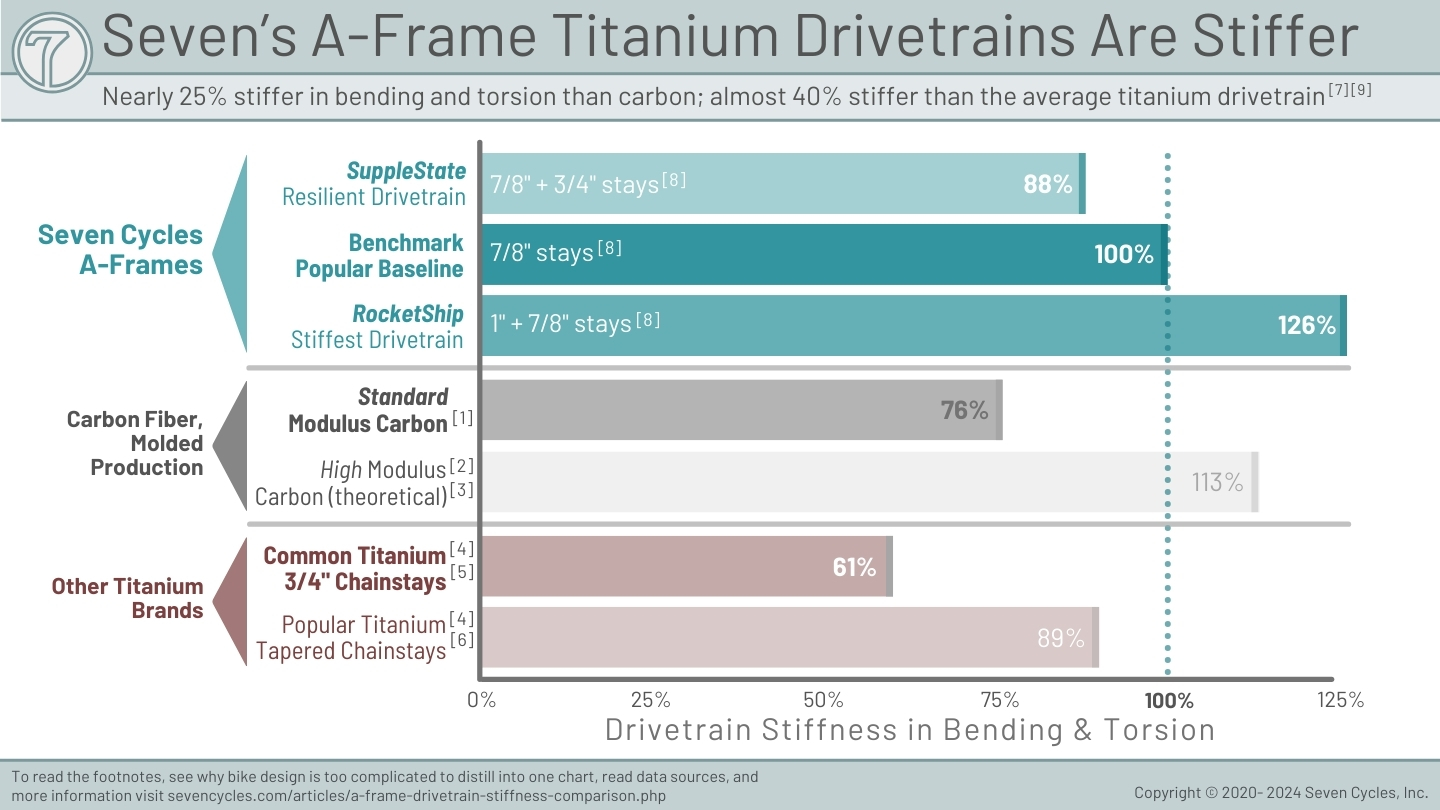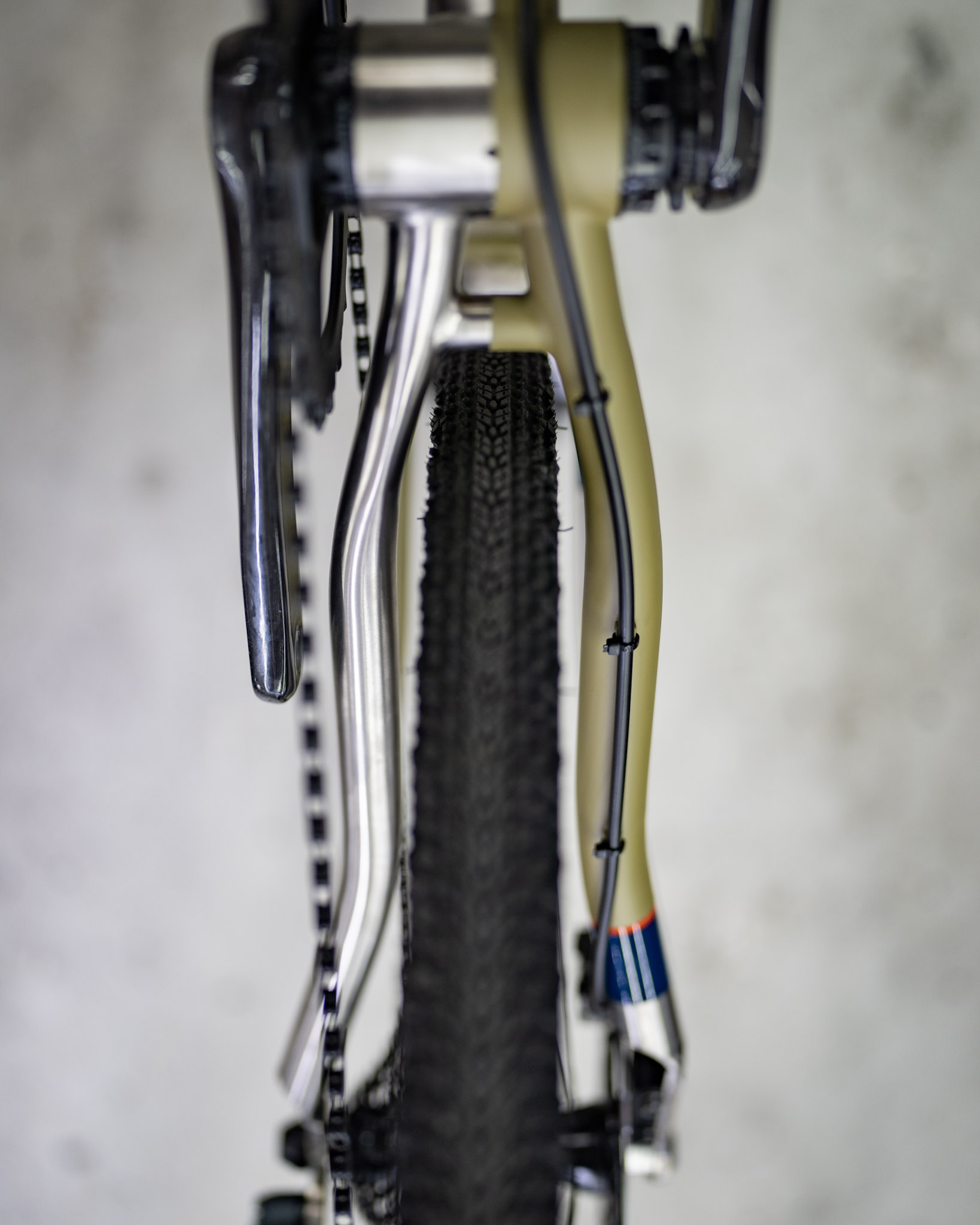A-Frame Drivetrain Stiffness Comparisons

Footnotes
- Higher modulus than Specialized Tarmac's average tested by Velo.com.
- Higher Modulus Carbon = Lower Strength: “Higher modulus fibers almost always have lower strength than lower modulus fibers. Even though high modulus fibers are stiffer, they tend to be more brittle and prone to breakage than standard fibers, so their use has to be restricted to areas on the bike where load forces will not compromise the frame.” -- Senior Engineer at Cervelo, interview with Cyclist Magazine.
- A theoretical mix of standard, intermediate, and high-modulus carbon fibers. We say “theoretical” because we know of no carbon frame manufacturer that uses high-modulus material in chainstays. The Velo.com[1] test is a good example of this. So, too, is Cervelo's statement.[2] Both companies are perceived as among the best and most technically savvy in the industry. And yet, neither appears to employ high modulus fiber in chainstays. Specialized appears to not even use medium modulus for drivetrains.
- These stiffnesses assume the use of popular cowled dropouts and welded-on brake mounts.
- Some of the most popular titanium brands use 3/4" chainstays.
- This tubeset brand offers tapered chainstays in one wall and tapered diameter for road and gravel, and one for mountain bike frames. From the smallest frame to the largest.
- Engineering drivetrain stiffness is complex. Chainstay material, tube size, and tube wall are the primary contributors, but many other factors impact overall ride performance including dropout design, brake mount design, tire & chainring clearance method (yoke, bending, etc.), bottom bracket shell, down tube, seat tube.
- Through tubing selection we achieve three drivetrain stiffness levels, primarily chainstay tube diameter and wall thickness. Each performance tubeset type (Benchmark, RocketShip, and SuppleState) use a distinctly different tube diameter pairing on a baseline frame. From there, tubing diameter and wall are tailored to frame size and riding function (road, gravel, mountain, etc.)
- These are estimated averages. Just as Seven's Rider-Ready and Simple-Custom frames have size-specific and function-specific tubesets, and therefore, the stiffness shown here are averages, so to is that the case with carbon fiber drivetrains from various manufacturers; while large brand carbon is not usually size-specific (as evidenced by a single maximum recommended rider weight across all sizes), frame stiffness varies from manufacturer to manufacturer.

